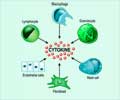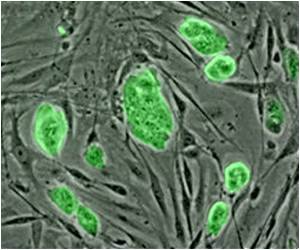Scientists have identified a gene associated with narcolepsy, a disorder that causes disabling daytime sleepiness.
Scientists funded by the National Institutes of Health have identified a gene associated with narcolepsy, a disorder that causes disabling daytime sleepiness, sleep attacks, irresistible bouts of sleep that can strike at any time, and disturbed sleep at night. The gene has a known role in the immune system, which strongly suggests that autoimmunity, in which the immune system turns against the body's own tissues, plays an important role in the disorder.
"The link between narcolepsy and autoimmunity was proposed decades ago, but efforts to verify it have failed repeatedly. Current findings leave little doubt that autoimmunity plays a role," says Merrill Mitler, Ph.D., a program director with the National Institute of Neurological Disorders and Stroke (NINDS).The study was funded principally by NINDS, with additional support from the National Institute of Mental Health (NIMH), the National Heart, Lung and Blood Institute (NHLBI), and the National Institute of Allergy and Infectious Diseases (NIAID), all components of NIH.
The new study, which appears today in Nature Genetics, focused on narcolepsy with cataplexy – a sudden loss of muscle tone that can cause a person to collapse, with or without falling asleep. About 1 in 2,000 Americans have narcolepsy-cataplexy. The symptoms of narcolepsy-cataplexy have been shown to result from the death of a small group of brain cells that normally regulate the sleep-wake cycle by releasing chemicals called hypocretins.
Genetic and environmental factors both clearly play a role in narcolepsy-cataplexy. Until now, the best evidence for autoimmunity as a cause of the disorder was the discovery that nearly everyone with the disorder has unique variants of a gene called HLA-DQB1*0602. This is one of the genes that encodes HLA proteins, which dot the surface of the body's cells and help the immune system identify foreign proteins. Some researchers theorize that the HLA variants found in people with narcolepsy-cataplexy predispose them to an autoimmune reaction that destroys their hypocretin-producing cells.
There are gaps in that theory, however, says Emmanuel Mignot, M.D., Ph.D., director of the Center for Narcolepsy at Stanford University School of Medicine in Palo Alto, Calif., and a Howard Hughes Medical Institute investigator. Dr. Mignot discovered the link between narcolepsy and the hypocretins, and helped establish the link to the HLA system. HLA proteins are found in many tissues including the brain, where they may affect brain development, he says.
HLA variations, however, do not fully account for narcolepsy-cataplexy. Dr. Mignot led a genome-wide association study to search for other genes associated with narcolepsy-cataplexy. These studies involve scanning the genome – the entire set of DNA – for small differences between people who have a disorder and people who do not.
The researchers discovered that in addition to unique HLA variants, people with narcolepsy-cataplexy are also more likely to have unique variants of the TCRA gene, which encodes a receptor protein on the surface of T cells. T cells are the mobile infantry of the immune system. In concert with the HLA proteins, the T cell receptor enables T cells to recognize and attack foreign invaders, such as bacteria and viruses. Changes to the T cell receptor could increase the likelihood that the cells will direct their attack against the body.
It is important to note that this study, like most genome-wide association studies, did not identify genetic variants that directly cause narcolepsy-cataplexy. Instead it identifies groups that are more likely to show narcolepsy-cataplexy and groups that are less likely to show the disorder.
In people with the HLA variants that predispose to narcolepsy-cataplexy, there is about a 20-fold higher frequency of the disorder if variants in the TCRA gene are present. It is yet to be known which people with the genetic variants will go on to develop narcolepsy-cataplexy.
Other risk factors for narcolepsy-cataplexy remain to be discovered, and Dr. Mignot's findings could provide clues to their identity. For example, further studies to characterize the T cells in people with narcolepsy-cataplexy could help reveal whether specific environmental factors – such as infections – contribute to the disorder. Dr. Mignot's findings also could lead to a better understanding of other autoimmune diseases where HLA genes are known to play a role, such as multiple sclerosis and type 1 diabetes.
Source-Eurekalert
LIN














